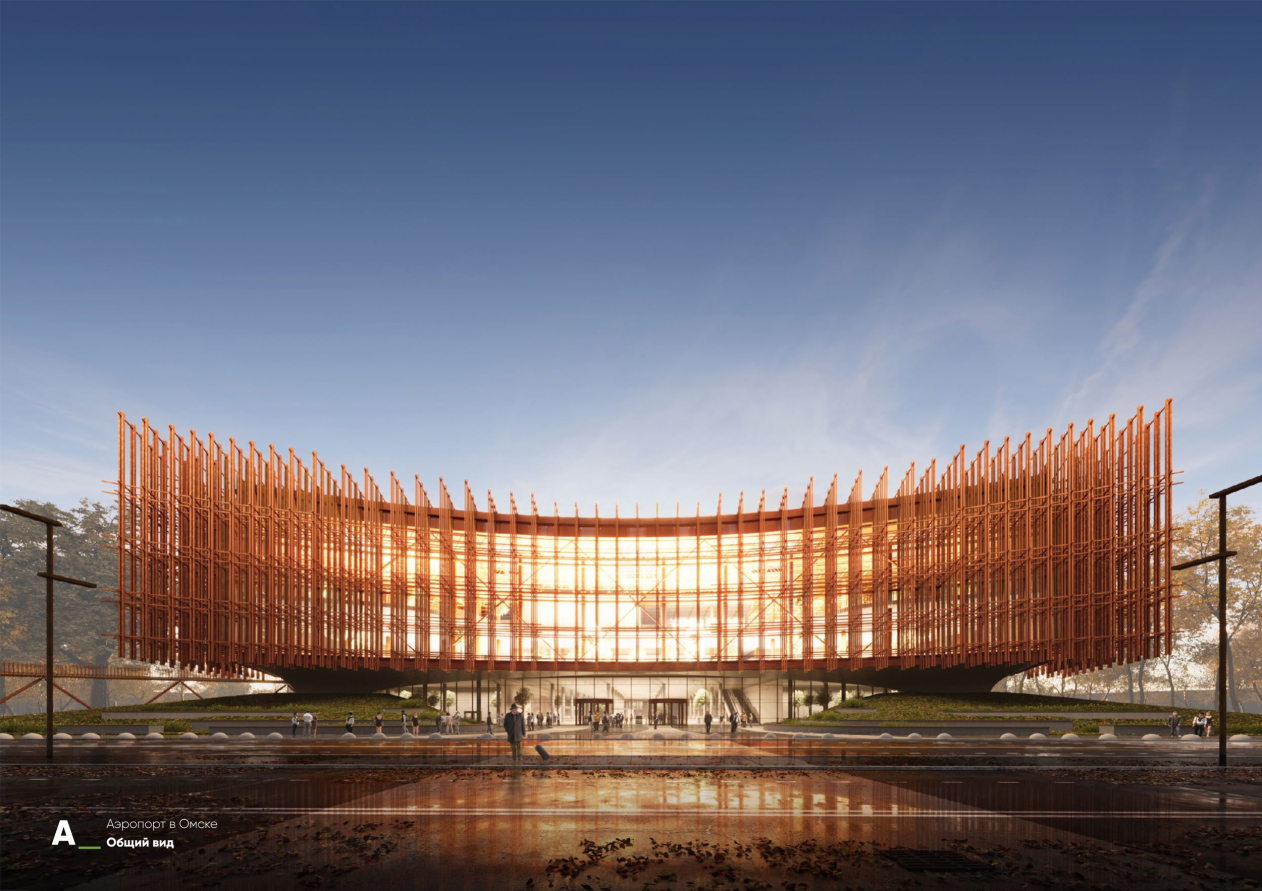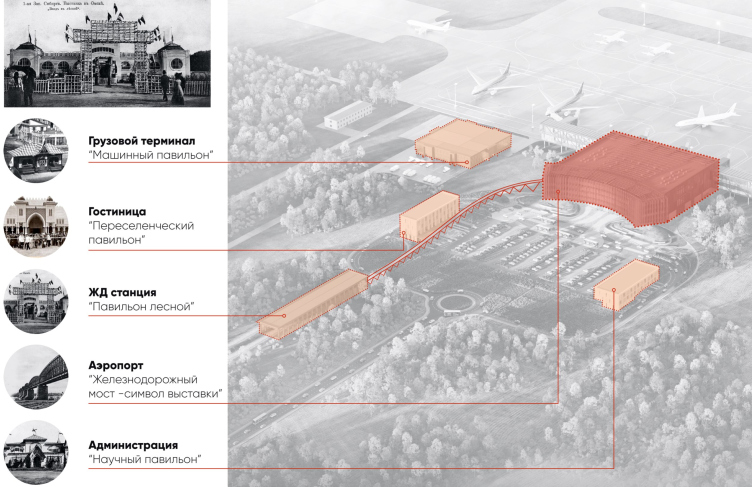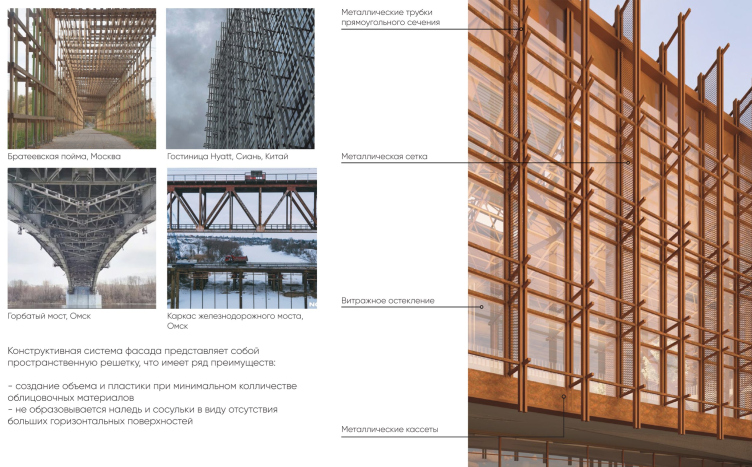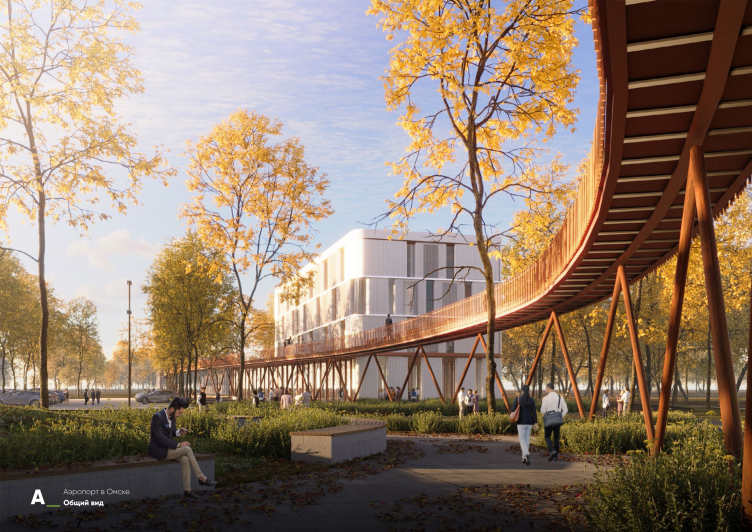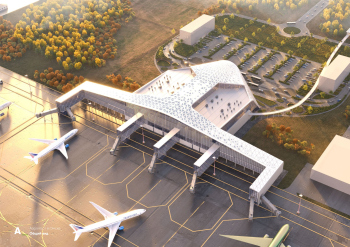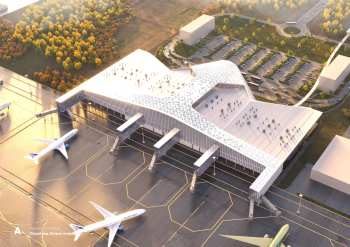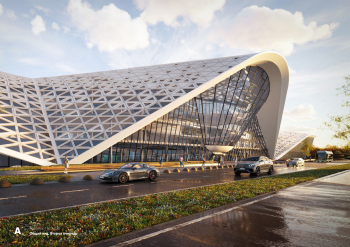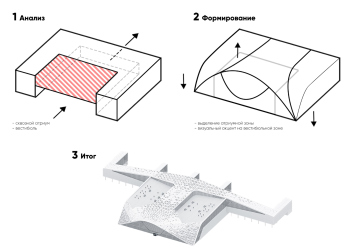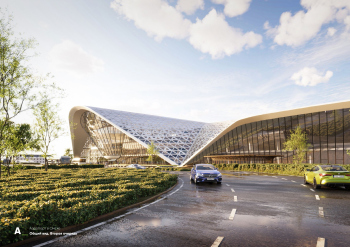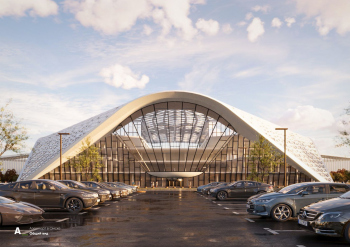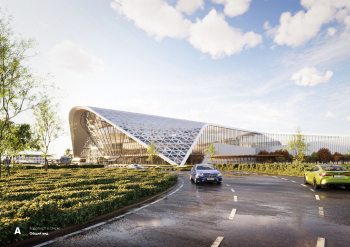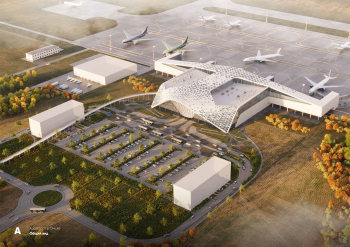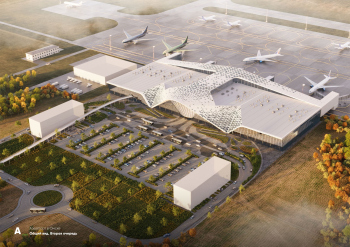ASADOV are experienced architects in airport design; they have built several well-known new terminals, such as Gagarin in Saratov, Bolshoye Savino in Perm, or the recently opened Leonov in Kemerovo. They have designed many more and continue to actively work with this typology. The architects have previously worked on the Omsk airport for a different regional administration. For the new competition, they proposed a different concept coming in two variations.
The concept is called “The Bridge” because an airport is a bridge between the earth and the sky, as well as between different cities.
The architects start from the West Siberian Exhibition that took place in Omsk in 1911, and the Trans-Siberian Railway bridge over the Irtysh River, built in 1896, which actually brought visitors from the European part to this Siberian Expo. The placement of the structures on the airport grounds is compared by the architects to Omsk exhibition pavilions, and the façade grid to the bridge structures.
Omsk-Fedorovka airport. The Bridge. Competition project. Variant 1
Copyright: © ASADOV Architects
The similarity to the bridge in the project is emphasized by two supports slightly protruding forward under the cantilever arches of the main façade. Technically, they are needed to support the “flying” corners, but they are also needed metaphorically: adorned with green hills, these imposts would indeed resemble supports embedded in the ground, making the entire façade seem like a fragment “cut out” from a long century-old bridge.
Omsk-Fedorovka airport. The Bridge. Competition project. Variant 1
Copyright: © ASADOV Architects
If you look closely at the pavilions of the 1911 exhibition, you can also find lattice structures there, especially when it comes to the wooden parts. Among the modern references, the architects mention the canopies over power lines designed by Grigory Guryanov in the Brateevskaya floodplain.
Omsk-Fedorovka airport. The Bridge. Competition project. Variant 1
Copyright: © ASADOV Architects
This gives us a wide range of references. But it’s important that the ASADOV variant is optimally simple; their experience in designing airports in different cities is evident: it’s a large terminal hangar designed for scalability by adding wings on the right and left.
The main focus is on the shell here.
The main façade is glass, but in front of the glass, there is a voluminous metal lattice of a brownish hue: weathered steel is the first thing that comes to mind, and probably it was also considered, but then the word “copper” flashes in the description – both options would be possible here. The architects justify the lattice structure not only with contextual references but also with convenience in winter maintenance: since all the protrusions are thin, large icicles do not form on them, and snow does not accumulate either.
Thus, a rather intricate image emerges: both the glass and the reddish metal shine – especially if it were copper, this would be felt particularly acutely, and in the case of weathered steel, there would be a textural tension between the shine and the matte rusty surface. However, it must be admitted that the metallic lattice with its emphasized projections equally resembles wood; in terms of plastique, it can be likened to modern wooden structures. The memory of Sou Fujimoto’s lattice ring for the World Expo in Osaka simply refuses to go. Especially since ASADOV have worked for the World Expo as well, and furthermore, the arc of the main façade in this project rounds off as if following a ring line.
However, the zigzag of “truss” columns supporting the transition to the railway station brings you back to the Trans-Siberian bridge, which, by the way, still exists – only in 1935, another one was added right next to it, just to improve the capacity of the mainline.
Omsk-Fedorovka airport. The Bridge. Competition project. Variant 1
Copyright: © ASADOV Architects
The interior continues the theme of the volumetric lattice, but here the space is delineated into three dimensions by strips of lamps and ceiling structures – wherever these are open. The color is distinctly copper, and in the main hall, the “river” flexibility is enhanced by perforated wavy ribbons on the ceiling, above the lamps. The architects proposed not only live and real plants but also those typical of the region.
The second option is also a bridge, but not in a steampunk style, but in a modern guise: a white wing of triangles above the entrance.
Taken together, the whole structure closely resembles the outline of a landed bird akin to a pterodactyl with long membranous wings and a billowy leather hood over its head. In the event that the airport needed expansion, the bird would spread the “membranes” at its shoulders.

